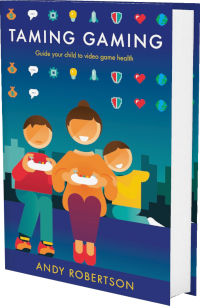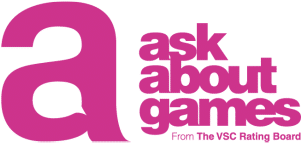 Android
Android iOS
iOS Mac
Mac Switch
Switch Wii
Wii Wii U
Wii U PC
PC PS4
PS4 PS5
PS5 Xbox One
Xbox One Xbox X|S
Xbox X|SWe've documented 28 accessibility features for Neurodeck, including Large Text, Low Pressure, No Quick Reactions, Select Difficulty and No Button Combos. Its accessibility is strongest in Visual and Controls but it also has features in Reading, Getting Started, Difficulty, Navigation and Audio to reduce unintended barriers.
This report is created with input from accessibility experts and the player community to help people find games that have the accessibility features they require. Once you have found potential games on the database, there are excellent specialist accessibility sites that offer in-depth reviews to guide your purchasing decisions.
Our accessibility examiner, Angela Hickman Newnham, first checked Neurodeck accessibility 2 years ago.
 Accessibility Notes
Accessibility Notes
With a mouse or touch screen the game can be played entirely by clicking/touching on the desired cards and confirmation boxes. With a game controller the controller map appears on the screen during gameplay. On PC there are keyboard inputs that will perform the game functions, but they are not shown during gameplay or in the menus, and can not be remapped.
 Game Details
Game Details
Release Date: 16/04/2020
Out Now: PC and Switch
Skill Rating: 12+ year-olds
Players: 1
Genres: Battle, Sequencing, Strategy (Communication, Narrative and Role-Play)
Accessibility: 28 features
Components: 2D Side-On and Cards
Developer: Tavrox Games (@TavroxGames)
Costs: Purchase cost
 Controls
Controls
We've documented 7 accessibility features for Controls in Neurodeck which deal with how you control the game, different options for alternative inputs and whether you can remap these settings to suit your needs.
Mouse And Keyboard
Can play with the following:
Mouse Alone: Can play with just the mouse/mouse-button/mouse wheel.
Mouse and Controller: Can play with mouse and controller simultaneously.
Touchscreen
Can play with the following. Additional gestures may be required for games played with a screenreader like VoiceOver.
One Tap Targeted: Can play with touchscreen, tap in specific locations.
Button Combinations
Specific button operation required to play
Holding Down Buttons Optional: Holding down buttons for prolonged periods (a second or more) is not required or can be switched to toggling the action on and off. This is in addition to the movement stick/button which is not considered a hold for this purpose.
Rapid Repeated Pressing Optional: Quick, repeated button pressing (more than 2 times a second) is not required, can be skipped or switched to holding a button to trigger a repeated action.
No Simultaneous Buttons: Only one button or key required at a time, in addition to direction stick(s).
Controller Vibration
Vibration Optional: Controller vibration not used in the game or you can disable it.
Similar Games With More Accessibility Features for Controls
If you want to play Neurodeck, but it doesn't offer the Controls accessibility features you require, these similar games extend the Controls accessibility:
- I Was a Teenage Exocolonist (16 Controls Features)
- Iris and the Giant (10 Controls Features)
 Difficulty
Difficulty
We've documented 1 accessibility feature for Difficulty in Neurodeck which deals with how you can adjust the challenge of play, and whether this is locked once chosen or can be adjusted as you play.
Difficulty Options
Select Difficulty: Select the level of difficulty from a range of presets. This not only offers a way to adjust the challenge of a game but enables you to do so without dealing with individual criteria.
Similar Games With More Accessibility Features for Difficulty
If you want to play Neurodeck, but it doesn't offer the Difficulty accessibility features you require, these similar games extend the Difficulty accessibility:
- She Dreams Elsewhere (3 Difficulty Features)
- I Was a Teenage Exocolonist (2 Difficulty Features)
- Black Book (2 Difficulty Features)
- Griftlands (2 Difficulty Features)
 Getting Started
Getting Started
We've documented 4 accessibility features for Getting Started in Neurodeck which deal with what support is offered to get started with the game. This includes customising the experience when you first open the game via any onboarding processes it provides as well as tutorials and other assistance when you first start playing.
Assistance Getting Starting
These features aid your play of the game in terms of cognitive load on learning controls, dealing with pressure and coping with the environment and challenges.
Tutorials: There are helpful tutorials and instructions on how to play. Information is provided in a timely manner, with appropriate level of detail.
Reaction-Time Not Critical: Individual game actions don’t need quick reactions, or there are settings to lower the requirement for quick reactions. This means you don't need to quickly press a button in response to an on-screen prompt, target a fast-moving target or skillfully complete a scenario against the clock.
Low Pressure: Game tasks aren't time-limited or there's a low-pressure mode. This avoids the pressure of being put on the clock for overarching missions, or failing tasks because you didn't reach a destination in time.
No Jump Scares: No sudden loud noises or popping-up scary visuals that unexpectedly appear without warning, or the option to disable them.
Similar Games With More Accessibility Features for Getting Started
If you want to play Neurodeck, but it doesn't offer the Getting Started accessibility features you require, these similar games extend the Getting Started accessibility:
- I Was a Teenage Exocolonist (9 Getting Started Features)
- Desta: The Memories Between (9 Getting Started Features)
- She Dreams Elsewhere (7 Getting Started Features)
- Adventures With Anxiety (7 Getting Started Features)
 Reading
Reading
We've documented 5 accessibility features for Reading in Neurodeck which deal with how much reading or listening comprehension is required, how well the game provides visual and audible access to the text and whether subtitles and captions are a good fit for purpose.
Reading Level
How much reading is required to play the game's main path or story and how complex the language is. The presence of voiced characters doesn't reduce this requirement, as it's recorded as a separate datapoint.
Moderate Reading: Moderate reading required. The quantity and complexity of reading are at a level that a high school student (14-year-old) would appreciate.
Text Visibility
Large Clear Text: All essential text is large and clear or can be adjusted to be. The general text used throughout the game in menus, instructions and other key information (excluding subtitles that are assessed separately) is at least 1/20 (46 pixels on 1080 screen) the height on landscape screens and at least 1/40 height on portrait screens. We base this on the full line-height, including the space above and below the letters.
High Contrast Text: Text colour contrasts to the background or can be adjusted to be. The text in menus, instructions and other information is presented in high contrast with a solid background.
Subtitles
All Speech Subtitled (Or No Speech In Game): All spoken content has subtitles, or there is no speech in the game. This means there is no requirement to hear spoken dialogue or narrative to play the game.
Captions
Speaker Indicator: Textual captions indicate who is speaking (or there is only ever one person speaking). This can also be indicated visually in the game with character icons or placing text in speech bubbles next to the person speaking.
Similar Games With More Accessibility Features for Reading
If you want to play Neurodeck, but it doesn't offer the Reading accessibility features you require, these similar games extend the Reading accessibility:
- Desta: The Memories Between (7 Reading Features)
- Iris and the Giant (6 Reading Features)
- Adventures With Anxiety (6 Reading Features)
- Night in the Woods (6 Reading Features)
 Navigation
Navigation
We've documented 1 accessibility feature for Navigation in Neurodeck which deals with how the game provides guidance and assistance to navigate its worlds. These are only for games that have traversal and exploration in 2D and 3D spaces.
Menu Navigation
Menu Audio Cues: Navigating menus provide an audio cue for each selection.
Similar Games With More Accessibility Features for Navigation
If you want to play Neurodeck, but it doesn't offer the Navigation accessibility features you require, these similar games extend the Navigation accessibility:
- Signs of the Sojourner (5 Navigation Features)
- Harry Potter: Magic Awakened (4 Navigation Features)
- I Was a Teenage Exocolonist (4 Navigation Features)
- Iris and the Giant (4 Navigation Features)
 Visual
Visual
We've documented 10 accessibility features for Visual in Neurodeck which deal with how you can adjust the visuals to suit your needs, and offer additional information if you can't hear the game.
Contrast
Medium Contrast: Game uses generally well contrasting and bright visuals, or has a slider to make this the case.
Interactive Elements
Large Game Elements: Game characters and other elements are large and distinguishable. Enemies and player characters are at least 1/6 of the height of the screen. Or there is a zoom feature to make them larger.
Outline Interactive Elements: Characters, platforms and enemies can be outlined or highlighted for visibility. This can be with a large border around the character or a special visual mode that adjust the colour to make characters more visible.
Visual Distractions
No Flashes: No flashing strobe effects or you can disable them. This includes the absence of flashing from dramatic visual effects, explosions or weather effects like lightning.
No Screen Shake: No screen shake effect or it is included but it can be disabled. This includes the absence of screen shake for dramatic effect as well as to indicate hits on a target.
No Busy Backgrounds: No distracting backgrounds or you can make them static or blank. This includes the absence of other movement elements in the background that might distract or confuse the action. Where foreground contrast is high, this includes games with some movement in the background that doesn't make it overly difficult to distinguish what is happening.
Audio Cues for Visual Events
Audio Cues for Visual Events: Audio is provided to indicate visual events. Game events or progress highlighted by visual icons, effects or animations are also accompanied by audio to signify that progress. This is useful for blind players.
Menu Audio Cues: Navigating menus provide an audio cue for each selection.
Motion Sickness Friendly
Motion Sickness Friendly: Doesn't have 3D movement elements that may trigger motion sickness, like motion blur, depth of field and field-of-vision. Or includes the ability to disable motion blur, depth of field and field-of-vision effects.
Colour Options
Colour Blind Friendly: Game doesn’t rely on colour or can switch to colour blind friendly mode with double coding or similar way to avoid colour dependance.
 Audio
Audio
We've documented 1 accessibility feature for Audio in Neurodeck which deals with how you can adjust the audio of the game and whether audio cues compensate for aspects of the game that are hard to see.
Adjustable Audio
Balance Audio Levels: Set music and game sound effects separately. This enables you to select your preference as well as ensure critical game sounds aren't obscured by other audio.
Similar Games With More Accessibility Features for Audio
If you want to play Neurodeck, but it doesn't offer the Audio accessibility features you require, these similar games extend the Audio accessibility:
- Harry Potter: Magic Awakened (2 Audio Features)
- Town of Salem (2 Audio Features)
- I Was a Teenage Exocolonist (2 Audio Features)
- Foretales (2 Audio Features)
System Accessibility Settings
In addition to the accessibility features provided in the game, you can also use system-wide accessibility settings:
Nintendo Switch
Nintendo Switch has some built-in features, including a lockable zoom, that can be used on all games.
PC
Windows has extensive accessibility features. Some, like colour correction, work with games. Lots of accessibility software can be used with PC games, from voice recognition to input device emulators.
Read more about system accessibility settings.
Accessibility Report supported by VSC Rating Board, PlayabilityInitiative and accessibility contributors Angela Hickman Newnham












